
|
Now it is so bright as 6.9 mag (Oct. 17, Marco Goiato). It will be observable in good condition in the Southern Hemisphere after this. But it keeps low in the Northern Hemisphere.
Date(TT) R.A. (2000) Decl. Delta r Elong. m1 Best Time(A, h)
Oct. 18 7 43.73 -29 57.2 1.050 1.348 82 6.7 4:43 (342, 23)
Oct. 25 7 4.42 -39 53.7 0.976 1.419 92 6.7 4:49 (359, 15)
|
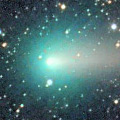
|
The brightness evolution has slowed down just before the perihelion passage. But it brightened up to 6.5 mag in September (Sept. 21, Marco Goiato). Now it is fading, but bright as 9.5 mag still now (Oct. 18, Con Stoitsis). It will be unobservable soon also in the Southern Hemisphere. After this, it will be observable again in late December in the Northern Hemisphere, or in mid January in the Southern Hemisphere. But the comet will fade down to 13 mag.
Date(TT) R.A. (2000) Decl. Delta r Elong. m1 Best Time(A, h)
Oct. 18 15 28.36 -18 5.0 1.431 0.755 29 9.2 18:46 ( 67, 1)
Oct. 25 15 35.56 -15 50.6 1.643 0.843 24 9.7 18:38 ( 71, 0)
|
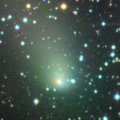
|
The brightness evolution had been slow, and has slowed down furthermore before the perihelion passage. It brightened up to 9.4 mag in September (Sept. 18, Chris Wyatt). However, it is already fading. It has already faded down to 11.0 mag (Oct. 16, Chris Wyatt). In the Southern Hemisphere, it will be unobservable in mid November. In the Northern Hemisphere, it is observable only in the evening low sky from late September to mid November. But it will be observable in excellent condition after 2015 January while the comet will be fading. It will pass extremely close to Mars on Oct. 19.
Date(TT) R.A. (2000) Decl. Delta r Elong. m1 Best Time(A, h)
Oct. 18 17 37.81 -25 53.9 1.589 1.403 60 10.8 18:46 ( 41, 17)
Oct. 25 17 37.40 -21 59.3 1.740 1.399 53 11.1 18:38 ( 47, 17)
|
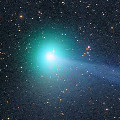
|
It brightened up to 6.0 mag from July to August (July 24, Maik Meyer). Now it is fading. It has already faded down to 11.7 mag (Oct. 18, Con Stoitsis). It keeps observable in good condition until November in the Southern Hemisphere, or December in the Northern Hemisphere.
Date(TT) R.A. (2000) Decl. Delta r Elong. m1 Best Time(A, h)
Oct. 18 19 9.80 3 47.1 1.844 2.028 85 11.9 18:46 ( 36, 53)
Oct. 25 19 11.84 1 55.8 2.069 2.125 79 12.5 18:38 ( 41, 49)
|
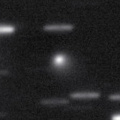
|
Now it is 12.4 mag and visible visually (Oct. 1, Chris Wyatt). It will approach to the earth in December and January, and it is expected to brighten up to 7-8 mag. In the Southern Hemisphere, it keeps observable in excellent condition until late January. In the Northern Hemisphere, it keeps extremely low until mid December. But after that, it will be observable in excellent condition.
Date(TT) R.A. (2000) Decl. Delta r Elong. m1 Best Time(A, h)
Oct. 18 7 59.86 -42 56.1 1.930 1.982 78 12.4 4:43 (343, 9)
Oct. 25 8 3.18 -43 21.8 1.801 1.911 80 12.1 4:49 (349, 10)
|
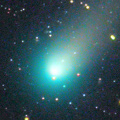
|
It brightened rapidly in outburst in mid October in 2013. It will be fading gradually after this. It has already faded down to 13.0 mag (Oct. 18, Con Stoitsis). In the Southern Hemisphere, it keeps observable in good condition for a long time until the comet fades out. In the Northern Hemisphere, it keeps extremely low after this.
Date(TT) R.A. (2000) Decl. Delta r Elong. m1 Best Time(A, h)
Oct. 18 21 39.50 -49 49.0 2.985 3.344 102 12.2 19:53 ( 0, 5)
Oct. 25 21 42.67 -49 8.2 3.136 3.411 97 12.4 19:28 ( 0, 6)
|
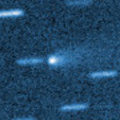
|
Now it is 14.5 mag (Oct. 4, Jakub Cerny). In the Northern Hemisphere, it is expected to be observable at 12-13 mag in excellent condition from 2014 summer to 2015 spring. But actually, it is fainter than this ephemeris. In the Southern Hemisphere, it will locate low around the highlight.
Date(TT) R.A. (2000) Decl. Delta r Elong. m1 Best Time(A, h)
Oct. 18 9 32.64 22 18.5 2.183 2.001 66 13.0 4:43 (275, 48)
Oct. 25 9 48.32 21 34.7 2.121 2.002 69 12.9 4:49 (279, 51)
|
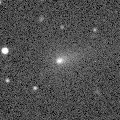
|
Now it is so bright as 12.2 mag (Oct. 6, Taras Prystavski). It keeps 13-14 mag until 2015 spring. But it keeps locating low in the morning sky. In the Southern Hemisphere, it is too low to observe until December.
Date(TT) R.A. (2000) Decl. Delta r Elong. m1 Best Time(A, h)
Oct. 18 10 53.74 10 41.3 1.972 1.430 43 13.5 4:43 (275, 25)
Oct. 25 11 19.17 8 43.2 1.928 1.399 44 13.4 4:49 (278, 26)
|
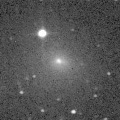
|
Brightening rapidly. Now it is so bright as 12.1 mag (Oct. 6, Taras Prystavski). In the Northern Hemisphere, it keeps observable in good condition until the comet will fade out in next spring. It is not observable in the Southern Hemisphere.
Date(TT) R.A. (2000) Decl. Delta r Elong. m1 Best Time(A, h)
Oct. 18 7 27.76 60 58.8 1.237 1.699 98 13.9 4:43 (196, 63)
Oct. 25 7 58.92 69 45.3 1.177 1.679 100 13.7 4:49 (189, 55)
|
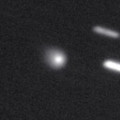
|
Now it is 14.3 mag (Oct. 16, Chris Wyatt). Getting brighter than originally expected, and it is already visible visually. It is expected to brighten up to 4 mag from autumn to winter in 2015. It is observable in good condition in the Southern Hemisphere until the highlight, or in the Northern Hemisphere after the highlight.
Date(TT) R.A. (2000) Decl. Delta r Elong. m1 Best Time(A, h)
Oct. 18 22 47.03 -24 44.6 4.546 5.214 127 14.0 20:59 ( 0, 30)
Oct. 25 22 41.40 -25 7.3 4.579 5.145 119 14.0 20:26 ( 0, 30)
|

|
New outburst occured on Sept. 30, and it brightened up to 13 mag (Sept. 30, Jean-Francois Soulier). It is already unobservable in the Northern Hemisphere. It will be unobservable in late October also in the Southern Hemisphere.
Date(TT) R.A. (2000) Decl. Delta r Elong. m1 Best Time(A, h)
Oct. 18 15 57.99 -28 7.5 6.839 6.102 39 14.1 18:46 ( 55, 0)
Oct. 25 16 3.53 -28 16.3 6.901 6.100 33 14.1 18:38 ( 57, -3)
|
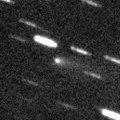
|
Now it is 14.3 mag and visible visually (Sept. 22, Seiichi Yoshida). It keeps observable for a long time after this while the comet will be fading gradually.
Date(TT) R.A. (2000) Decl. Delta r Elong. m1 Best Time(A, h)
Oct. 18 9 11.87 7 30.8 2.336 2.143 66 14.3 4:43 (296, 44)
Oct. 25 9 21.65 6 27.5 2.298 2.183 70 14.4 4:49 (303, 47)
|

|
Big asteroid discovered in 1906. It suddenly showed the cometary activity on Dec. 11, 2010, probably due to an impact of a small object. It has already turned to be stellar.
Date(TT) R.A. (2000) Decl. Delta r Elong. m1 Best Time(A, h)
Oct. 18 4 56.99 19 46.9 2.689 3.407 129 14.5 3:13 ( 0, 75)
Oct. 25 4 54.35 19 57.6 2.615 3.407 136 14.4 2:43 ( 0, 75)
|

|
Now it is 14.0 mag (Sept. 13, Mitsunori Tsumura). It keeps bright as 13-14 mag for a long time from 2013 to 2014.
Date(TT) R.A. (2000) Decl. Delta r Elong. m1 Best Time(A, h)
Oct. 18 20 37.31 -28 29.2 2.890 3.215 99 14.4 18:51 ( 0, 27)
Oct. 25 20 42.05 -27 54.3 2.996 3.225 94 14.5 18:38 ( 3, 27)
|
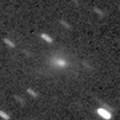
|
Now it is 14.0 mag (Oct. 19, Mike Wolle). It will be observable at 14.5 mag in excellent condition from October to December.
Date(TT) R.A. (2000) Decl. Delta r Elong. m1 Best Time(A, h)
Oct. 18 5 19.21 22 13.1 0.941 1.709 123 14.7 3:35 ( 0, 77)
Oct. 25 5 25.37 23 55.6 0.898 1.710 129 14.6 3:13 ( 0, 79)
|
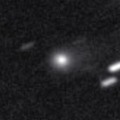
|
Now it is 14.8 mag (Sept. 16, Taras Prystavski). It is expected to brighten up to 13 mag and to be observable in good condition in 2015. It becomes unobservable temporarily from October to January.
Date(TT) R.A. (2000) Decl. Delta r Elong. m1 Best Time(A, h)
Oct. 18 15 9.79 -8 47.4 4.679 3.796 24 14.6 18:46 ( 77, 2)
Oct. 25 15 19.07 -9 25.5 4.686 3.770 20 14.6 18:38 ( 78, 0)
|
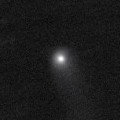
|
Now it is 15.0 mag (Sept. 14, Toshiyuki Takahashi). It keeps 15 mag for a long time from 2014 to 2015. It is observable in excellent condition in 2014 in the Southern Hemisphere, or in 2015 in the Northern Hemisphere.
Date(TT) R.A. (2000) Decl. Delta r Elong. m1 Best Time(A, h)
Oct. 18 0 48.13 -33 41.7 3.312 4.085 135 14.7 23:00 ( 0, 21)
Oct. 25 0 40.23 -32 36.6 3.335 4.067 131 14.7 22:24 ( 0, 23)
|
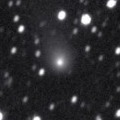
|
Now it is 14.2 mag (Oct. 4, Jakub Cerny). It keeps 13-14 mag and observable in good condition in the Northern Hemisphere for a long time from 2013 to 2014. It locates low in the Southern Hemisphere. Fragment B is also visible at 17.0 mag (Sept. 29, F. Garcia).
Date(TT) R.A. (2000) Decl. Delta r Elong. m1 Best Time(A, h)
Oct. 18 22 52.76 37 44.4 3.610 4.369 134 14.8 21:05 (180, 87)
Oct. 25 22 46.72 35 15.3 3.687 4.407 131 14.9 20:31 (180, 90)
|

|
Now it is 13.3 mag (Sept. 22, Seiichi Yoshida). It keeps bright at 13-14 mag for a long time until 2014.
Date(TT) R.A. (2000) Decl. Delta r Elong. m1 Best Time(A, h)
Oct. 18 18 20.03 -10 31.8 7.170 6.914 71 14.9 18:46 ( 41, 35)
Oct. 25 18 20.69 -11 6.0 7.308 6.939 64 14.9 18:38 ( 45, 32)
|
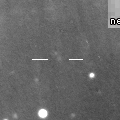
|
It will brighten up to 8-9 mag in 2015 spring. But it is not observable now. In the Southern Hemisphere, it will become observable in January, then it keeps observable in good condition after that. In the Northern Hemisphere, it keeps extremely low and hard to observe from December to 2015 June. It will be observable in good condition after June while the comet will be fading gradually.
Date(TT) R.A. (2000) Decl. Delta r Elong. m1 Best Time(A, h)
Oct. 18 13 21.79 -6 40.4 3.174 2.180 3 15.1 4:43 (268,-15)
Oct. 25 13 35.52 -8 7.7 3.119 2.134 6 14.9 4:49 (272,-12)
|
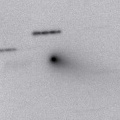
|
Now it is 13.8 mag (Sept. 16, Taras Prystavski). It is observable at 14 mag in excellent condition until November.
Date(TT) R.A. (2000) Decl. Delta r Elong. m1 Best Time(A, h)
Oct. 18 23 46.46 -6 56.7 1.485 2.397 149 15.1 21:59 ( 0, 48)
Oct. 25 23 46.42 -7 1.8 1.554 2.420 142 15.2 21:31 ( 0, 48)
|

|
It brightened up to 11-12 mag in 2012. It has already faded down to 14.9 mag (Aug. 12, Taras Prystavski). Now it is not observable. It will be observable at 15 mag in good condition again in 2015.
Date(TT) R.A. (2000) Decl. Delta r Elong. m1 Best Time(A, h)
Oct. 18 12 5.13 -8 43.6 9.282 8.359 20 15.1 4:43 (280, 0)
Oct. 25 12 6.43 -8 58.6 9.268 8.396 27 15.1 4:49 (285, 6)
|
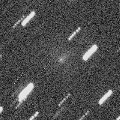
|
Now it is 15.7 mag (Sept. 15, Hidetaka Sato). It keeps 15 mag from autumn to winter. It moves southwards fast in winter.
Date(TT) R.A. (2000) Decl. Delta r Elong. m1 Best Time(A, h)
Oct. 18 8 52.45 18 22.5 1.822 1.818 73 15.4 4:43 (288, 54)
Oct. 25 9 3.08 14 46.3 1.754 1.818 77 15.3 4:49 (299, 56)
|
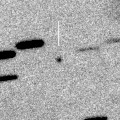
|
Now it is 16.5 mag (Sept. 28, Taras Prystavski). It keeps 14-15 mag for a long time from 2014 autumn to 2015 autumn. In the Southern Hemisphere, it keeps observable in excellent condition for a long time. In the Northern Hemisphere, it is only observable in the low sky from September to October. Then it will be unobservable until 2015 June.
Date(TT) R.A. (2000) Decl. Delta r Elong. m1 Best Time(A, h)
Oct. 18 9 21.57 -33 46.5 2.865 2.549 61 15.5 4:43 (325, 10)
Oct. 25 9 22.74 -37 24.2 2.738 2.500 65 15.4 4:49 (332, 11)
|
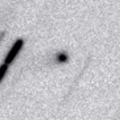
|
Now it is 15.8 mag (Sept. 7, Taras Prystavski). It is expected to brighten up to 14 mag from 2015 to 2016. It is observable in good condition in the Southern Hemisphere. It locates somewhat low in the Northern Hemisphere.
Date(TT) R.A. (2000) Decl. Delta r Elong. m1 Best Time(A, h)
Oct. 18 5 9.60 -24 21.7 4.435 4.963 116 15.7 3:25 ( 0, 31)
Oct. 25 5 1.91 -24 51.8 4.337 4.933 121 15.6 2:50 ( 0, 30)
|
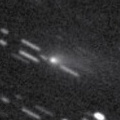
|
It brightened up to 2 mag by unusual major outburst in 2007. It brightened up to 12.6 mag in this apparition (June 25, Taras Prystavski). Now it is fading. It has already faded down to 16.7 mag (Oct. 2, Taras Prystavski). In the Northern Hemisphere, it keeps observable until it fades out in 2015. In the Southern Hemisphere, it keeps extremely low after this.
Date(TT) R.A. (2000) Decl. Delta r Elong. m1 Best Time(A, h)
Oct. 18 5 14.21 48 49.5 1.927 2.564 119 15.7 3:30 (180, 76)
Oct. 25 5 12.59 49 34.1 1.891 2.593 125 15.9 3:01 (180, 75)
|
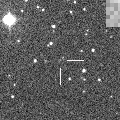
|
Now it is 17.0 mag (Oct. 2, Taras Prystavski). It will brighten up to 15 mag and will be observable in excellent condition from November to February in the Northern Hemisphere. It locates somewhat low in the Southern Hemisphere.
Date(TT) R.A. (2000) Decl. Delta r Elong. m1 Best Time(A, h)
Oct. 18 6 52.41 29 51.4 2.086 2.503 102 15.9 4:43 (313, 83)
Oct. 25 6 58.25 29 34.7 1.998 2.497 108 15.7 4:46 ( 0, 85)
|
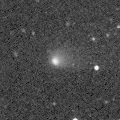
|
Now it is 13.9 mag (Sept. 22, Seiichi Yoshida). First return of a new periodic comet which brightened up to 13 mag in 2007. It will be fading after this. But it keeps observable until February when it becomes fainter than 18 mag.
Date(TT) R.A. (2000) Decl. Delta r Elong. m1 Best Time(A, h)
Oct. 18 23 27.13 -16 9.6 1.456 2.311 140 15.9 21:40 ( 0, 39)
Oct. 25 23 27.32 -16 16.2 1.518 2.318 133 16.0 21:12 ( 0, 39)
|
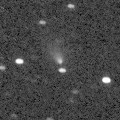
|
Now it is 15.6 mag (Sept. 13, Mitsunori Tsumura). It will brighten up to 15 mag and will be observable in excellent condition from winter to spring.
Date(TT) R.A. (2000) Decl. Delta r Elong. m1 Best Time(A, h)
Oct. 18 22 20.69 -18 46.8 0.880 1.669 125 16.1 20:33 ( 0, 36)
Oct. 25 22 20.91 -17 41.8 0.890 1.626 119 15.9 20:06 ( 0, 37)
|
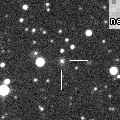
|
Now it is 16.1 mag (Sept. 30, Taras Prystavski). In the Northern Hemisphere, it keeps 15-16 mag and observable in excellent condition for a long time until early summer in 2015. In the Southern Hemisphere, it is not observable until mid January.
Date(TT) R.A. (2000) Decl. Delta r Elong. m1 Best Time(A, h)
Oct. 18 11 43.46 37 20.8 4.016 3.508 53 16.0 4:43 (242, 28)
Oct. 25 11 55.04 36 34.2 3.962 3.509 56 15.9 4:49 (245, 32)
|
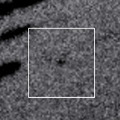
|
Now it is 17.5 mag (Oct. 8, Taras Prystavski). It will brighten very rapidly, up to 10 mag in January. In the Northern Hemisphere, it will be geting higher gradually. In the Southern Hemisphere, it will be getting lower gradually, and it keeps extremely low after January.
Date(TT) R.A. (2000) Decl. Delta r Elong. m1 Best Time(A, h)
Oct. 18 16 50.44 -27 45.8 1.787 1.386 50 16.7 18:46 ( 47, 8)
Oct. 25 17 11.09 -28 0.8 1.761 1.323 48 16.1 18:38 ( 47, 8)
|
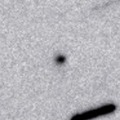
|
Now it is 16.5 mag (Sept. 27, Taras Prystavski). It keeps observable at 15-16 mag for a long time from 2015 to 2016. In the Northern Hemisphere, it is observable in excellent condition. It locates somewhat low in the Southern Hemisphere.
Date(TT) R.A. (2000) Decl. Delta r Elong. m1 Best Time(A, h)
Oct. 18 3 59.38 22 28.9 5.008 5.825 141 16.2 2:15 ( 0, 78)
Oct. 25 3 55.11 23 2.3 4.922 5.802 149 16.1 1:44 ( 0, 78)
|
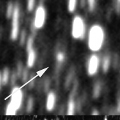
|
Now it is 16.7 mag (Sept. 23, Taras Prystavski). Distant object, but it keeps observable at 14 mag for a long time from 2015 to 2016.
Date(TT) R.A. (2000) Decl. Delta r Elong. m1 Best Time(A, h)
Oct. 18 19 0.21 -6 26.6 6.472 6.403 81 16.1 18:46 ( 32, 43)
Oct. 25 19 3.12 -6 43.1 6.547 6.373 75 16.1 18:38 ( 37, 41)
|
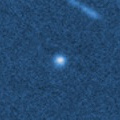
|
It will approach to the sun down to 0.3 a.u. in 2015 July, and it is expected to be bright. Now it is 16.0 mag (Oct. 8, Taras Prystavski). It keeps observable while the comet will be brightening gradually until January when the comet will be 15 mag. The condition is bad after that and it will be hard to observe. But in the Southern Hemisphere, it will be observable after mid July in 2015, and keeps observable while the comet will be fading gradually. In the Northern Hemisphere, it is extremely hard to observe after 2015.
Date(TT) R.A. (2000) Decl. Delta r Elong. m1 Best Time(A, h)
Oct. 18 23 11.81 -30 0.6 3.514 4.206 128 16.5 21:24 ( 0, 25)
Oct. 25 23 5.59 -29 49.1 3.520 4.126 121 16.4 20:50 ( 0, 25)
|
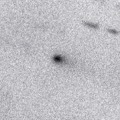
|
It brightened up to 14.6 mag in summer (July 8, Hidetaka Sato). Now it is fading. It has already faded down to 17.8 mag (Sept. 26, Taras Prystavski). It is fading much faster than predicted. The condition is good in the Northern Hemispehre. It keeps observable until next February when the comet will be fainter than 18 mag. It locates somewhat low in the Southern Hemisphere.
Date(TT) R.A. (2000) Decl. Delta r Elong. m1 Best Time(A, h)
Oct. 18 8 16.50 15 29.5 1.867 1.983 81 16.6 4:43 (302, 59)
Oct. 25 8 24.98 14 55.1 1.829 2.026 86 16.7 4:49 (312, 62)
|
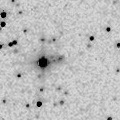
|
First return of a new periodic comet discovered in 2004. Now it is 17.0 mag (Oct. 8, Taras Prystavski). It will be observable in excellent condition from autumn to winter. It is expected to brighten very rapidly, and brighten up to 16 mag from November to December.
Date(TT) R.A. (2000) Decl. Delta r Elong. m1 Best Time(A, h)
Oct. 18 21 27.84 8 9.2 0.675 1.458 120 17.0 19:41 ( 0, 63)
Oct. 25 21 40.35 7 22.2 0.682 1.437 116 16.7 19:27 ( 0, 62)
|
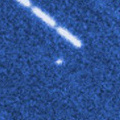
|
Now it is 18.6 mag (Oct. 4, D. Herald). It will brighten up to 9 mag in 2015 spring. But the condition of this apparition is bad. In the Southern Hemisphere, it keeps observable until winter when the comet will be 13 mag. But it is not observable around the brightest days. In the Northern Hemispehre, it keeps extremely low and hard to observe. It will be observable after 2015 autumn when the comet will fade out.
Date(TT) R.A. (2000) Decl. Delta r Elong. m1 Best Time(A, h)
Oct. 18 20 20.69 -50 59.3 2.427 2.631 90 16.9 18:46 ( 2, 4)
Oct. 25 20 25.85 -49 57.8 2.462 2.582 85 16.8 18:38 ( 4, 5)
|
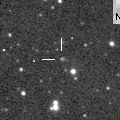
|
Now it is 17.0 mag (Oct. 2, Taras Prystavski). It will brighten up to 16 mag in winter, and will be observable in excellent condition.
Date(TT) R.A. (2000) Decl. Delta r Elong. m1 Best Time(A, h)
Oct. 18 8 13.02 15 39.1 4.093 4.082 82 16.8 4:43 (303, 60)
Oct. 25 8 17.29 15 12.8 3.989 4.081 88 16.8 4:49 (315, 64)
|
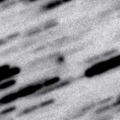
|
Now it is 16.8 mag (Sept. 11, Taras Prystavski). It will keep 16-17 mag for a long time from 2014 summer to early 2016. It keeps observable in excellent condition until autumn in the Southern Hemisphere. It keeps low in the Northern Hemisphere.
Date(TT) R.A. (2000) Decl. Delta r Elong. m1 Best Time(A, h)
Oct. 18 17 53.01 -23 5.5 2.688 2.424 64 16.9 18:46 ( 39, 21)
Oct. 25 18 4.96 -22 55.3 2.740 2.400 59 16.9 18:38 ( 41, 20)
|

|
It brightened up to 12-13 mag from 2012 to 2013. Now it is fading. But it is bright as 15.6 mag still now (Sept. 16, Taras Prystavski). It keeps 16-17 mag until autumn, and will be observable in good condition.
Date(TT) R.A. (2000) Decl. Delta r Elong. m1 Best Time(A, h)
Oct. 18 0 26.77 -18 41.4 3.206 4.084 147 16.9 22:39 ( 0, 36)
Oct. 25 0 22.92 -18 38.8 3.274 4.101 141 17.0 22:08 ( 0, 36)
|

|
Now it is 17.3 mag (Sept. 23, Ken-ichi Kadota). It will brighten up to 16 mag and will be observable in excellent condition in winter.
Date(TT) R.A. (2000) Decl. Delta r Elong. m1 Best Time(A, h)
Oct. 18 9 50.38 13 10.1 2.329 2.007 59 17.0 4:43 (283, 40)
Oct. 25 10 5.15 12 10.4 2.266 2.007 62 16.9 4:49 (287, 43)
|
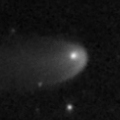
|
Now it is between 15.8 mag (Sept. 3, Taras Prystavski) and 18.5 mag (Sept. 2, M. Jaeger, E. Prosperi, S. Prosperi, W. Vollmann). It brightened up to 13 mag from 2011 to 2012. It will be fading after this, but it keeps brighter than 18 mag until 2015 spring.
Date(TT) R.A. (2000) Decl. Delta r Elong. m1 Best Time(A, h)
Oct. 18 3 44.40 -4 53.5 8.146 8.968 143 17.0 2:00 ( 0, 50)
Oct. 25 3 41.36 -4 53.9 8.136 9.003 148 17.0 1:30 ( 0, 50)
|
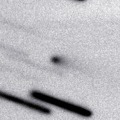
|
Now it is 16.7 mag (Sept. 24, Catalina Sky Survey). In the Northern Hemisphere, it keeps observable in good condition while the comet will be fading gradually. In the Southern Hemisphere, it keeps extremely low.
Date(TT) R.A. (2000) Decl. Delta r Elong. m1 Best Time(A, h)
Oct. 18 9 9.25 32 3.5 1.790 1.804 74 17.1 4:43 (263, 57)
Oct. 25 9 25.10 32 22.4 1.761 1.841 78 17.3 4:49 (265, 60)
|
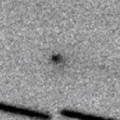
|
Now it is 17.0 mag (Sept. 20, Ken-ichi Kadota). It keeps observable at 17-18 mag from August to November in excellent condition in the Northern Hemisphere. It locates somewhat low in the Southern Hemisphere.
Date(TT) R.A. (2000) Decl. Delta r Elong. m1 Best Time(A, h)
Oct. 18 7 30.62 22 24.5 1.069 1.505 93 17.2 4:43 (309, 71)
Oct. 25 7 43.56 22 14.7 1.048 1.535 97 17.3 4:49 (322, 74)
|

|
It will brighten up to 14 mag around the perihelion passage in 2019. In 2014, it will be observable in excellent condition at 17 mag from summer to winter in the Northern Hemisphere. It locates extremely low in the Southern Hemisphere. However, it is faint as 18.8 mag now, much fainter than this ephemeris (Sept. 24, W. Hasubick).
Date(TT) R.A. (2000) Decl. Delta r Elong. m1 Best Time(A, h)
Oct. 18 3 19.37 35 59.1 11.573 12.390 143 17.2 1:35 (180, 89)
Oct. 25 3 17.11 36 6.7 11.493 12.362 149 17.2 1:06 (180, 89)
|

|
Now it is 17.4 mag (Aug. 2, iTelescope Observatory, Siding Spring). It keeps observable at 17-18 mag from summer to winter in excellent condition in the Northern Hemisphere. It locates somewhat low in the Southern Hemisphere.
Date(TT) R.A. (2000) Decl. Delta r Elong. m1 Best Time(A, h)
Oct. 18 7 2.26 18 4.2 2.016 2.391 99 17.3 4:43 (334, 71)
Oct. 25 7 7.00 18 6.2 1.956 2.417 105 17.3 4:49 (355, 73)
|

|
Now it is 17.6 mag (Oct. 4, L. Arnold). It will pass close to the earth from spring to summer in 2016, and it is expected to be observable at 6-7 mag in good condition. In the Northern Hemispehre, it keeps observable in good condition until 2015 spring when the comet will brighten up to 15.5 mag. In the Southern Hemisphere, it keeps low for a long time until 2016 spring.
Date(TT) R.A. (2000) Decl. Delta r Elong. m1 Best Time(A, h)
Oct. 18 6 59.12 33 39.9 6.066 6.343 101 17.4 4:43 (280, 83)
Oct. 25 6 56.74 34 0.6 5.888 6.282 108 17.3 4:45 ( 0, 89)
|
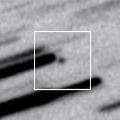
|
Now it is 19.1 mag (Sept. 2, Jean-Francois Soulier). It will pass the perihelion on Mar. 15. In the Northern Hemispehre, it keeps observable in good condition until late February. In the Southern Hemisphere, it keeps observable until mid February, but it locates low.
Date(TT) R.A. (2000) Decl. Delta r Elong. m1 Best Time(A, h)
Oct. 18 5 34.99 37 53.3 1.431 2.097 118 17.8 3:51 (180, 87)
Oct. 25 5 29.06 38 28.4 1.307 2.056 126 17.5 3:18 (180, 87)
|
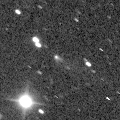
|
Now it is 18.1 mag (Oct. 1, Catalina Sky Survey). It was observed at 17 mag from 2013 to early 2014. It will be observable at 17.5 mag in good condition again from autumn to winter in 2014.
Date(TT) R.A. (2000) Decl. Delta r Elong. m1 Best Time(A, h)
Oct. 18 8 21.24 15 55.7 3.211 3.201 80 17.6 4:43 (300, 58)
Oct. 25 8 26.84 15 23.9 3.125 3.213 86 17.6 4:49 (310, 63)
|
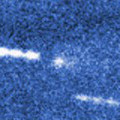
|
Now it is 18.6 mag (Sept. 22, Toshiyuki Takahashi). It will be observable at 17.5 mag in excellent condition from autumn to winter.
Date(TT) R.A. (2000) Decl. Delta r Elong. m1 Best Time(A, h)
Oct. 18 1 37.08 15 17.5 1.436 2.429 173 17.6 23:49 ( 0, 70)
Oct. 25 1 33.44 14 49.7 1.424 2.415 173 17.6 23:18 ( 0, 70)
|
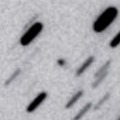
|
It was observed around 17-18 mag in early 2014. It will be observable around 17-18 mag again from 2014 autumn to 2015 spring, in excellent condition in the Northern Hemisphere. It is not observable in the Southern Hemisphere.
Date(TT) R.A. (2000) Decl. Delta r Elong. m1 Best Time(A, h)
Oct. 18 10 13.65 53 51.8 5.273 5.118 75 17.7 4:43 (226, 47)
Oct. 25 10 21.64 53 47.0 5.197 5.117 79 17.7 4:49 (226, 51)
|
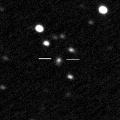
|
Now it is 17.5 mag (Sept. 15, W. Hasubick). Brightening furthermore after the perihelion passage. It will be observable at 17-18 mag in good condition until November.
Date(TT) R.A. (2000) Decl. Delta r Elong. m1 Best Time(A, h)
Oct. 18 20 58.75 -10 57.5 3.474 3.921 109 17.7 19:12 ( 0, 44)
Oct. 25 21 1.50 -10 57.9 3.595 3.943 103 17.8 18:47 ( 0, 44)
|

|
Now it is 17.6 mag (Sept. 14, Mitsunori Tsumura). It has brightened in outburst up to 14 mag twice, in 2006 January and 2011 May. It will pass the perihelion in 2015. It keeps observable at 17 mag for a long time after this.
Date(TT) R.A. (2000) Decl. Delta r Elong. m1 Best Time(A, h)
Oct. 18 20 52.30 -14 58.1 5.517 5.886 106 17.7 19:05 ( 0, 40)
Oct. 25 20 53.67 -14 57.9 5.620 5.881 100 17.7 18:39 ( 0, 40)
|
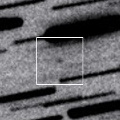
|
It keeps 17.5 mag and will be observable in excellent condition from autumn to winter in the Northern Hemisphere. It locates somewhat low in the Southern Hemisphere. However, it is actually 19.7 mag, much fainter than predicted (Sept. 3, Jean-Francois Soulier).
Date(TT) R.A. (2000) Decl. Delta r Elong. m1 Best Time(A, h)
Oct. 18 7 38.47 16 43.7 1.285 1.636 90 17.7 4:43 (315, 66)
Oct. 25 7 49.87 14 50.9 1.251 1.660 94 17.7 4:49 (329, 67)
|
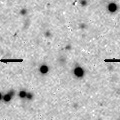
|
Now it is 17.9 mag (Aug. 5, Ken-ichi Kadota). It keeps observable at 17-18 mag in good condition from July to October.
Date(TT) R.A. (2000) Decl. Delta r Elong. m1 Best Time(A, h)
Oct. 18 21 55.76 -12 53.9 1.809 2.488 122 17.7 20:09 ( 0, 42)
Oct. 25 21 58.87 -12 14.4 1.884 2.489 116 17.8 19:44 ( 0, 43)
|

|
It has not been observed in this return yet. It will brighten up to 13 mag in 2016. In the Northern Hemisphere, it will be observable at 16 mag in excellent condition in this winter. It locates somewhat low in the Southern Hemisphere.
Date(TT) R.A. (2000) Decl. Delta r Elong. m1 Best Time(A, h)
Oct. 18 6 39.62 26 43.8 3.076 3.477 105 18.0 4:43 (343, 81)
Oct. 25 6 41.69 26 51.2 2.956 3.453 111 17.9 4:30 ( 0, 82)
|

|
Peculiar asteroid with a cometary orbit of 45-years period. Now it is 18.3 mag (Oct. 4, M. Jaeger, et al.). It will brighten up to 17 mag from November to December, and will be observable in excellent condition.
Date(TT) R.A. (2000) Decl. Delta r Elong. m1 Best Time(A, h)
Oct. 18 6 21.70 28 47.2 2.208 2.708 109 18.1 4:38 ( 0, 84)
Oct. 25 6 7.57 27 9.5 2.082 2.714 119 17.9 3:56 ( 0, 82)
|
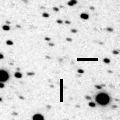
|
It was discovered in 1819, and re-discovered in 2003. Although it was predicted to be extremely faint as 26 mag, it unusually brightened up to 17.5 mag in outburst in 2013 July (July 6, Hidetaka Sato). However, no observations have been reported since mid July. It will pass the perihelion in 2014 August, and will approach to the sun down to 0.96 a.u. The brightness is predicted to be 23 mag at best. However, if the cometary activity continues, it may be observed brighter. Ken-ichi Kadota reported it was not detected, fainter than 16.3 mag, on May 21.
Date(TT) R.A. (2000) Decl. Delta r Elong. m1 Best Time(A, h)
Oct. 18 11 20.41 8 9.7 1.836 1.198 36 23.5 4:43 (273, 19)
Oct. 25 11 40.84 6 13.5 1.873 1.255 38 23.6 4:49 (277, 20)
|
|
![]()
 C/2009 F4 ( McNaught )
C/2009 F4 ( McNaught ) 106P/Schuster
106P/Schuster 304P/2014 L4 ( Ory )
304P/2014 L4 ( Ory ) C/2010 U3 ( Boattini )
C/2010 U3 ( Boattini ) 191P/McNaught
191P/McNaught C/2013 X1 ( PanSTARRS )
C/2013 X1 ( PanSTARRS ) (3200) Phaethon
(3200) Phaethon 119P/Parker-Hartley
119P/Parker-Hartley P/2014 M4 ( PanSTARRS )
P/2014 M4 ( PanSTARRS ) C/2013 U2 ( Holvorcem )
C/2013 U2 ( Holvorcem ) P/2013 G1 ( Kowalski )
P/2013 G1 ( Kowalski ) 174P/(60558) 2000 EC98 ( Echeclus )
174P/(60558) 2000 EC98 ( Echeclus ) 11P/Tempel-Swift-LINEAR
11P/Tempel-Swift-LINEAR 303P/2014 L1 ( NEAT )
303P/2014 L1 ( NEAT ) 116P/Wild 4
116P/Wild 4 2013 NS11
2013 NS11 289P/Blanpain
289P/Blanpain![]()





















































